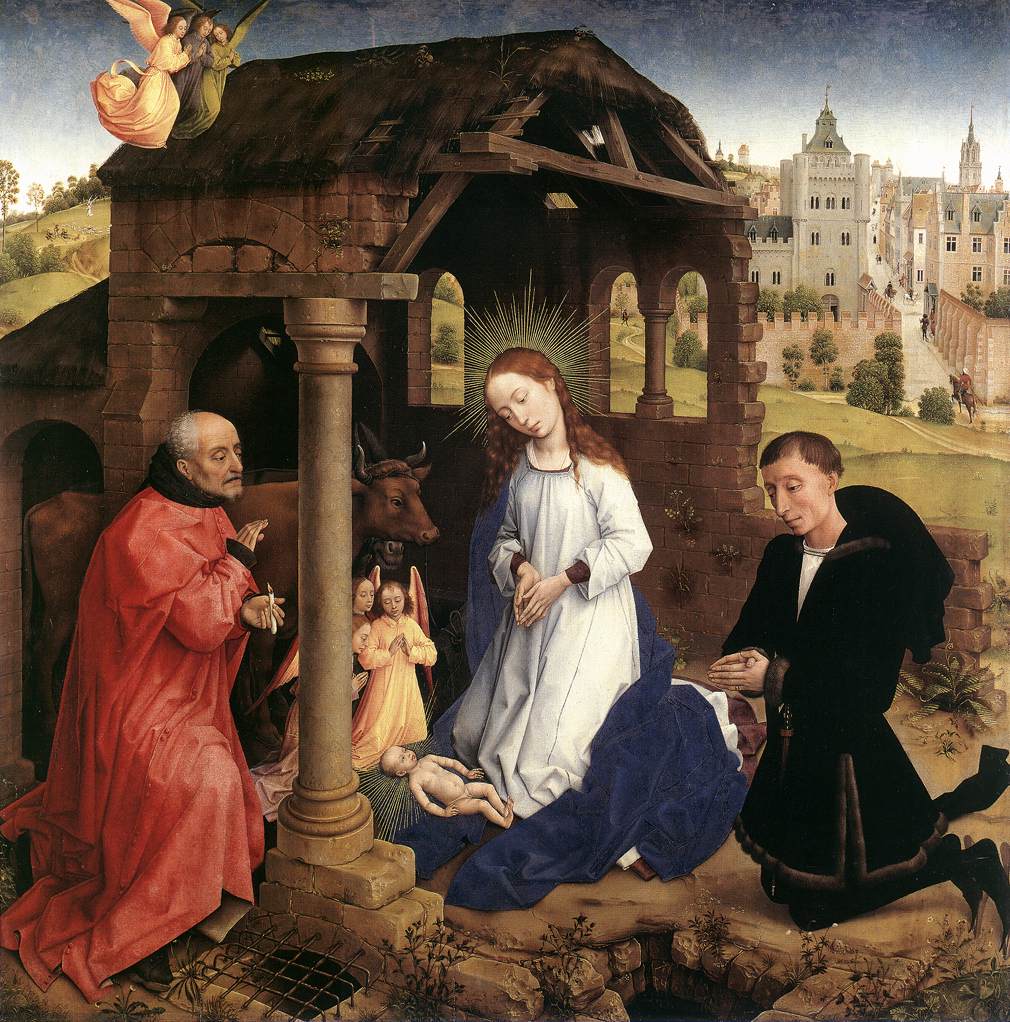Description
The Bladelin Triptych (center panel) by artist Rogier van der Weyden is a 15th-century masterpiece noted for its artistic style, composition, and use of color. With an original size of 91 x 89 cm, this painting presents a wealth of detail and a visual narrative that make it a fascinating piece.
Van der Weyden's artistic style is characterized by his meticulous attention to detail, the expressiveness of the faces, and the realism in the representation of objects and textures. In the Bladelin Triptych, these elements combine to create a powerful and emotional image. The artist manages to capture the essence of the characters and convey their emotions through subtle but powerful gestures and facial expressions.
The composition of the triptych is another interesting aspect of this painting. Van der Weyden uses the vanishing point technique to create a sense of depth and perspective in the central panel. The characters are arranged in different planes, which adds dynamism to the scene and guides the viewer's gaze through the work. Additionally, the artist uses diagonal and curved lines to draw attention to focal points and create a harmonious visual flow.
When it comes to color, the Bladelin Triptych features a rich and vibrant palette. Van der Weyden uses warm tones and subtle contrasts to bring the scene to life and emphasize the importance of the main characters. Rich, saturated colors also contribute to the painting's sense of drama and emotionality.
The history of the Bladelin Triptych painting is also fascinating. It was commissioned by Pieter Bladelin, an influential bourgeois from the city of Bruges in Belgium. The triptych was created as a devotional object for the private chapel of Bladelin and represents the Virgin Mary with the Child Jesus surrounded by angels and saints. This religious representation is complemented by scenes of daily life on the side panels, adding a human and earthy aspect to the work.
In addition to these known aspects, there are lesser-known details about the Bladelin Triptych that are also interesting. For example, van der Weyden is believed to have used real models to represent the characters in the painting, giving it a higher degree of realism. Additionally, the triptych has undergone damage and restoration over the centuries, affecting its original appearance but also adding layers of history and meaning to the work.
In short, Rogier van der Weyden's Bladelin Triptych is a fascinating painting that stands out for its artistic style, composition, color, and rich history. This 15th-century masterpiece continues to captivate viewers with its beauty and soulfulness, continuing to stand as a testament to the talent and mastery of one of the great painters of the Flemish Renaissance.

